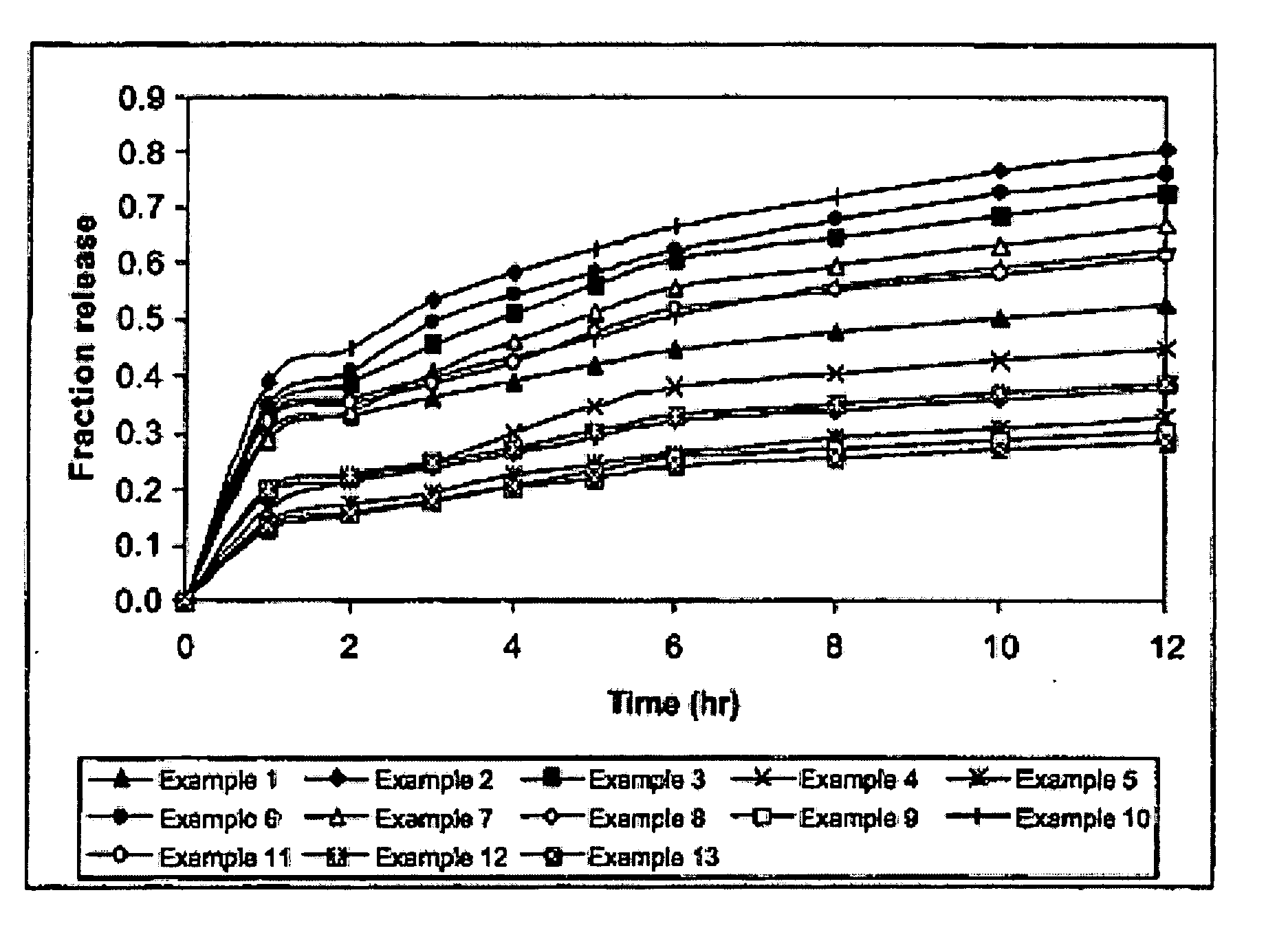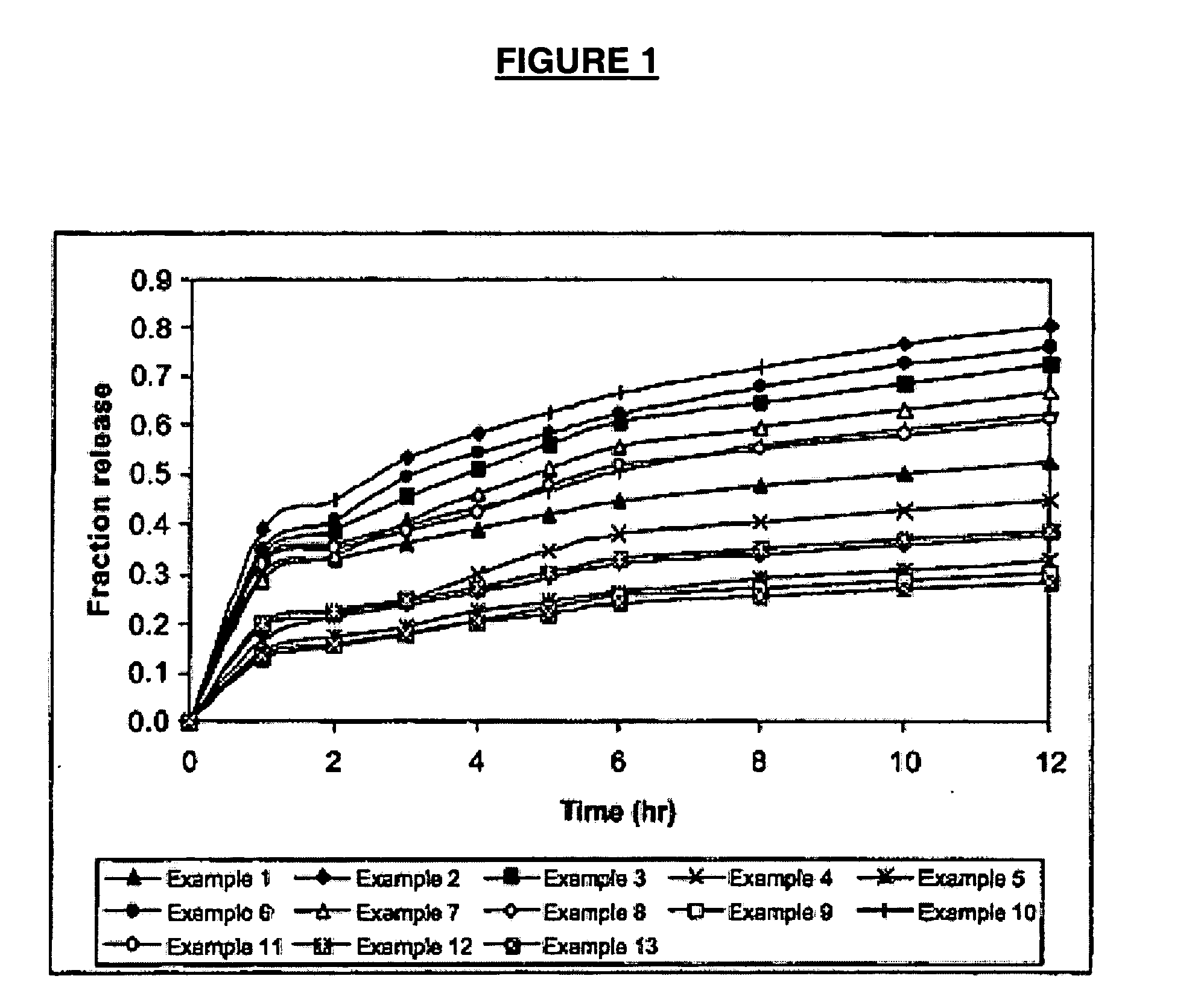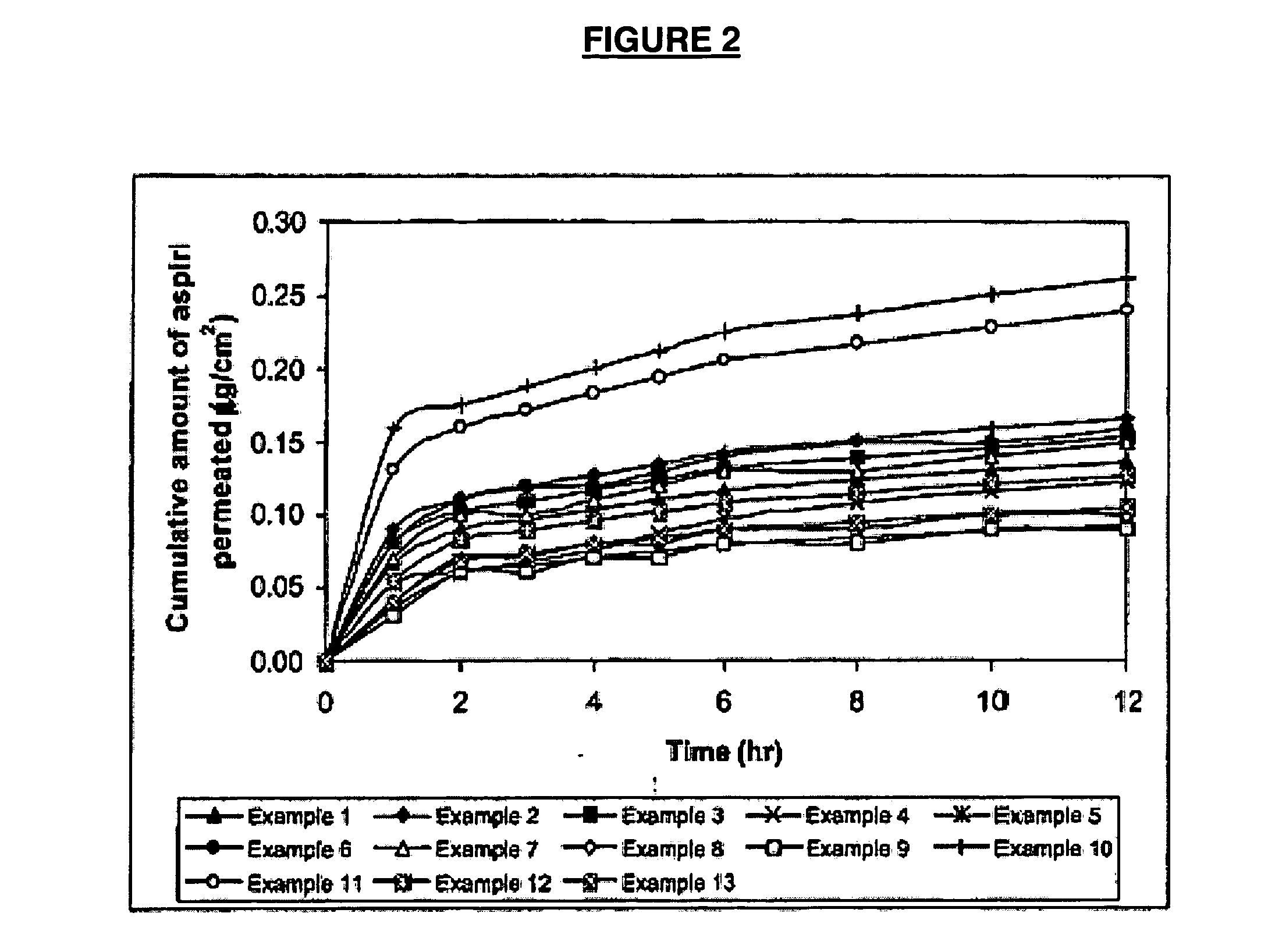Topical and/or transdermal bioactive compound delivery system
- Summary
- Abstract
- Description
- Claims
- Application Information
AI Technical Summary
Benefits of technology
Problems solved by technology
Method used
Image
Examples
example 1
[0079] The composition of the matrix consisted of co-polymer of N-vinylacetamide and sodium acrylate (PNVA GE-167) of 9% (w / w) and the weight ratios of PNVA GE-167 to aluminium chloride and of propylene glycol to N-methyl-2-pyrrolidone were kept at 1.5:1 and 2:1, respectively.
examples 2-5
[0080] The compositions of the matrix consisted of PNVA GE-167 with different amount of 5% (Example 2), 7% (Example 3), 11% (Example 4) and 13% (Example 5), while the weight ratios of PNVA GE-167 to aluminium chloride at 1.5:1 and of propylene glycol to N-methyl-2-pyrrolidone at 2:1 were maintained constant.
examples 6-9
[0081] The compositions of the matrix consisted of 9% (w / w) of PNVA GE-167 and the weight ratio of propylene glycol to N-methyl-2-pyrrolidone was maintained at 2:1 but the weight ratios of PNVA GE-167 to aluminium chloride varied from 2.5:1 (Example 6), 2:1. (Example 7), 1:1 (Example 8) to 1:1.5 (Example 9).
PUM
| Property | Measurement | Unit |
|---|---|---|
| Sensitivity | aaaaa | aaaaa |
| Bioadhesion | aaaaa | aaaaa |
Abstract
Description
Claims
Application Information
 Login to View More
Login to View More - R&D Engineer
- R&D Manager
- IP Professional
- Industry Leading Data Capabilities
- Powerful AI technology
- Patent DNA Extraction
Browse by: Latest US Patents, China's latest patents, Technical Efficacy Thesaurus, Application Domain, Technology Topic, Popular Technical Reports.
© 2024 PatSnap. All rights reserved.Legal|Privacy policy|Modern Slavery Act Transparency Statement|Sitemap|About US| Contact US: help@patsnap.com










